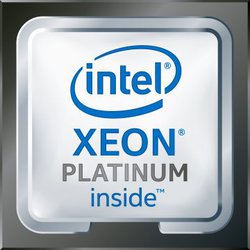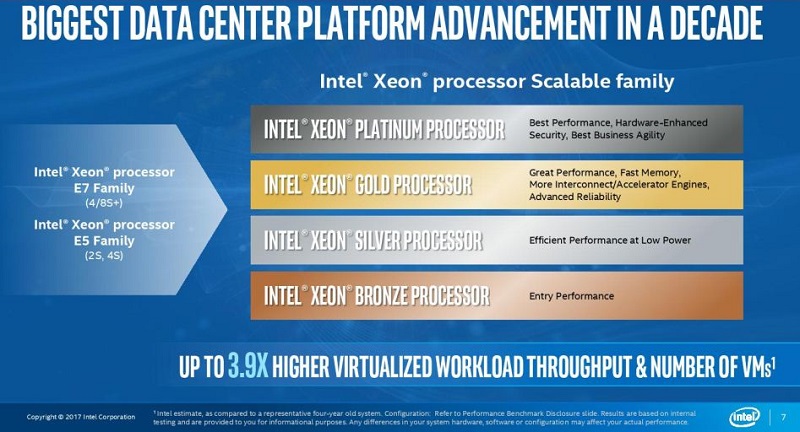
May 4, 2017
By: Michael Feldman
The much-anticipated unification of Intel’s Xeon E3, E5 and E7 product lines is upon us. Starting with the upcoming “Skylake” datacenter chips, all Xeons will now fall under the new Xeon Scalable Processor (SP) family.
As a result, the Xeon EP, and EX suffixes are being consolidated into a single SP designation. However, under the new structure, Intel has come up with four processor levels: Platinum, Gold, Silver, and Bronze. It’s anticipated that the old E3 (single-socket), E5 (dual-socket) and E7 (quad-socket/multi-socket) will map to the Silver, Gold and Platinum levels, respectively, but since four levels need to be filled, it’s likely to get a bit more nuanced than that. The graphic below offers a few hints.
 Source: Intel
Source: Intel
In any case, Intel is using the announcement of the new family to tee up the Skylake silicon, which according to an editorial penned by Intel VP and GM Lisa Spelman, represents “the biggest set of data center platform advancements in this decade.” Skylake will include a number of integrated “performance accelerators,” namely the 512-bit Advanced Vector Extensions (AVX-512), QuickAssist Technology (QAT), and the Volume Management Device (VMD). Not all Skylake SP chips will include all these accelerators. Rather, they will be distributed across the various levels and individual SKUs based on their anticipated target audience.
For the HPC crowd, the AVX-512 capability will be in high demand since it allows applications to perform more floating point operations per CPU cycle – the lifeblood of most HPC workloads. The 512-bit vectors can be used to speed up things like scientific simulations, financial analytics, AI/machine learning, and 3D modeling and analysis. Currently AVX-512 is only available in Intel’s “Knights Landing” Xeon Phi manycore product. Be aware though that the AVX-512 capabilities in the Xeon Phi and new Xeons will not be exactly the same.
The VMD capability could also be useful in HPC applications since it simplifies management of PCIe NVMe solid state drives, such as Intel’s new Optane SSD, as well as vanilla NAND-based drives. The QAT technology, which accelerates cryptography and compression, is probably less useful for HPC work, although there may be situations where it’s appreciated.
Some of the Skylake parts will also have the high performance Omni-Path (OPA) fabric integrated in the package, and this silicon will undoubtedly end up on SKUs aimed at HPC servers. Right now, only the Xeon Phi has the integrated OPA option. An integrated Ethernet option will also be available in the upcoming products.
To learn exactly where the HPC server processors fit into this new family and what all the options are, we’ll have to wait a few months, when the first Skylake SP processors are launched.
